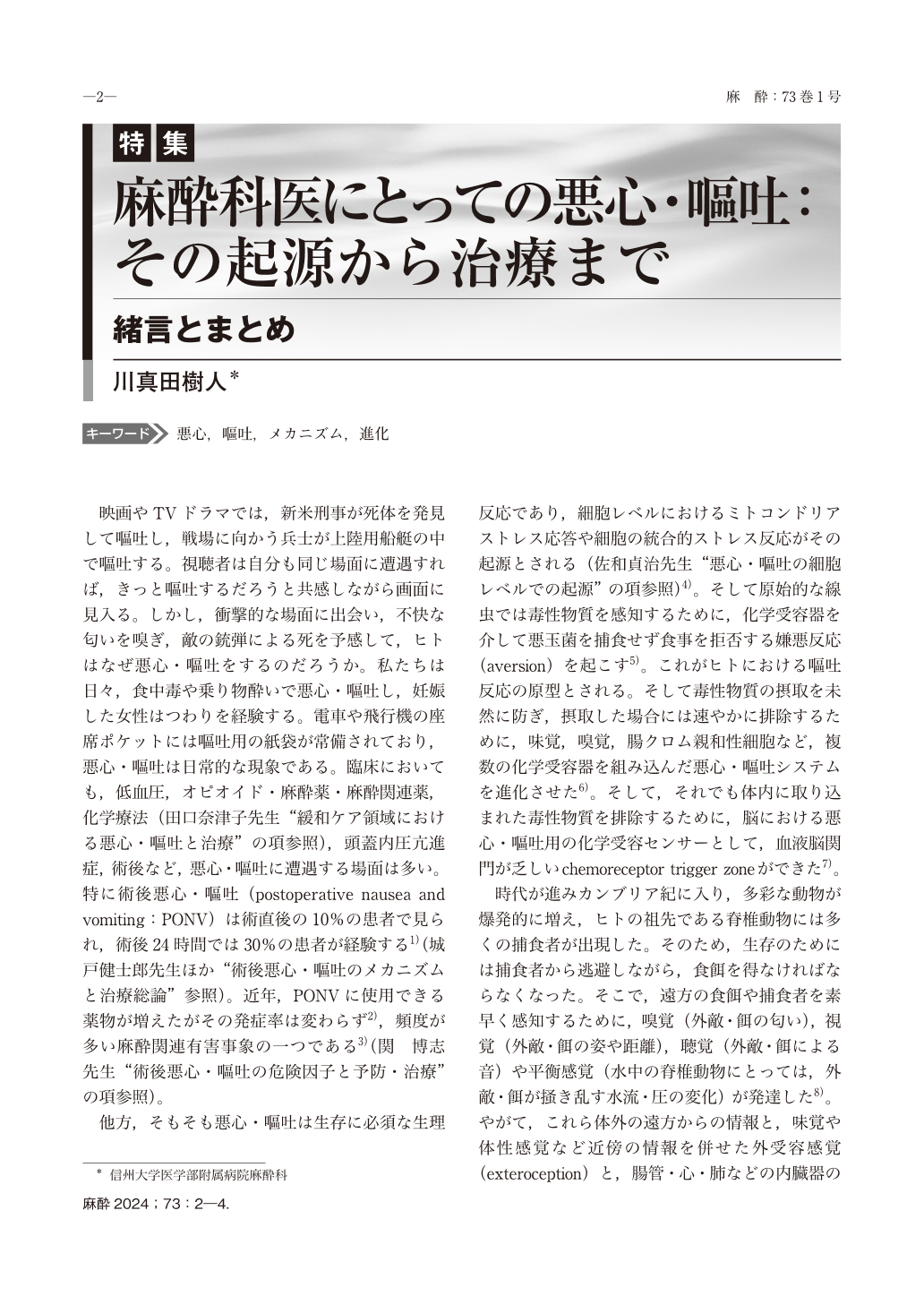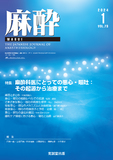Japanese
English
- 有料閲覧
- Abstract 文献概要
- 1ページ目 Look Inside
- 参考文献 Reference
映画やTVドラマでは,新米刑事が死体を発見して嘔吐し,戦場に向かう兵士が上陸用船艇の中で嘔吐する。視聴者は自分も同じ場面に遭遇すれば,きっと嘔吐するだろうと共感しながら画面に見入る。しかし,衝撃的な場面に出会い,不快な匂いを嗅ぎ,敵の銃弾による死を予感して,ヒトはなぜ悪心・嘔吐をするのだろうか。私たちは日々,食中毒や乗り物酔いで悪心・嘔吐し,妊娠した女性はつわりを経験する。電車や飛行機の座席ポケットには嘔吐用の紙袋が常備されており,悪心・嘔吐は日常的な現象である。臨床においても,低血圧,オピオイド・麻酔薬・麻酔関連薬,化学療法(田口奈津子先生 “緩和ケア領域における悪心・嘔吐と治療” の項参照),頭蓋内圧亢進症,術後など,悪心・嘔吐に遭遇する場面は多い。特に術後悪心・嘔吐(postoperative nausea and vomiting:PONV)は術直後の10%の患者で見られ,術後24時間では30%の患者が経験する1)(城戸健士郎先生ほか “術後悪心・嘔吐のメカニズムと治療総論” 参照)。近年,PONVに使用できる薬物が増えたがその発症率は変わらず2),頻度が多い麻酔関連有害事象の一つである3)(関 博志先生 “術後悪心・嘔吐の危険因子と予防・治療” の項参照)。
Although anesthesiologists frequently encounter patients with nausea and vomiting(NV)in daily clinical practice, there has been little research regarding NV’s physiological significance. Similar to the pain and immune systems(which prevent the entry of microorganisms and foreign substances from the outside), NV is a defense mechanism that is essential for survival, as it eliminates toxins that enter the body from the outside. Suppressing NV may therefore be detrimental to the human body, just as immunodeficiency and painlessness threaten the body’s survival. In this special issue, the mechanisms of nausea and vomiting caused by various factors, the genetic factors of NV, postoperative NV, and NV in palliative care are discussed. The new perspectives in this special issue will encourage anesthesiologists to reconsider NV.

Copyright © 2024 KOKUSEIDO CO., LTD. All Rights Reserved.


